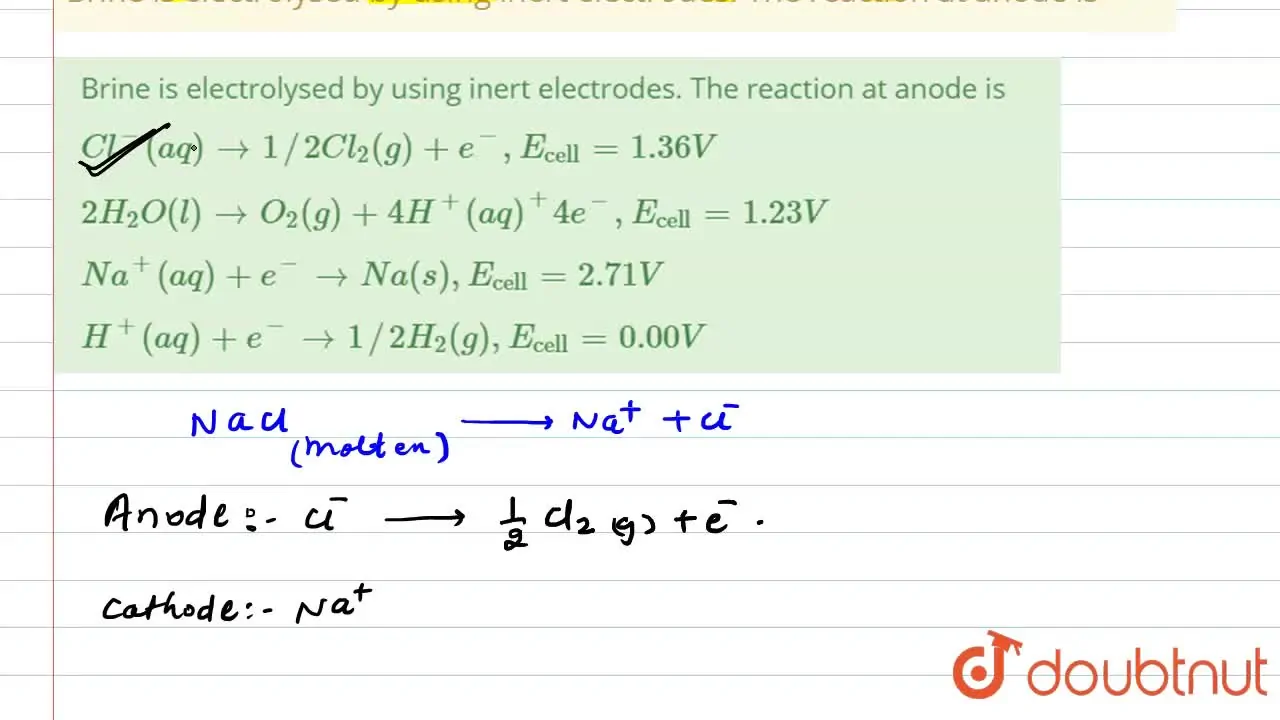Brine is electrolysed by using inert electrodes. The reaction at anode is
The correct Answer is:A
Although oxidation potential of ion is higher than that of , yet oxidation of ion takes place in preference to . This is because due to overvoltage of , much higher potential is needed for oxidation of water.
Related Playlists
- BOOK - ICSECHAPTER - GENERAL PRINCIPLES AND PROCESSES OF ISOLATION OF ELEMENTS EXERCISE - EXERCISE (PART-I ( OBJECTIVE QUESTIONS ))24videos
GENERAL PRINCIPLES AND PROCESSES OF ISOLATION OF ELEMENTS
- BOOK - ICSECHAPTER - GENERAL PRINCIPLES AND PROCESSES OF ISOLATION OF ELEMENTS EXERCISE - EXERCISE (PART-I ( OBJECTIVE QUESTIONS )) (MATCH THE FOLLOWING)6videos
GENERAL PRINCIPLES AND PROCESSES OF ISOLATION OF ELEMENTS
- BOOK - ICSECHAPTER - ELECTROCHEMISTRYEXERCISE - ISC EXAMINATION QUESTIONS (PART-II Numerical Problems)19videos
ELECTROCHEMISTRY
- BOOK - ICSECHAPTER - HALOALKANES AND HALOARENES EXERCISE - SOURCE9videos
HALOALKANES AND HALOARENES
Similar Questions
A solution of sodium sulphate in water is electrolysed using inert electrodes, The products at the cathode and anode are respectively.
View SolutionWhen molten NaCl is electrolysed by using inert electrode, the product obtained al cathode is
View SolutionA dilute aqueous solution of CuSo4 is electrolysed using platinum electrods. The products at the anode and cathode are:
View SolutionA dilute aqueous solution of Na2SO4 is electrolyzed using platinum electrodes. The products at the anode and cathode are :
View SolutionAn aqueous solution of Na2SO4 is electrolysed using Pt electrodes. The products at the cathode and anode are respectively:
View SolutionAn aqueous solution of CuSO4 is electrolyzed using Pt electrodes in one case and Cu electrodes in another case. What are the products of electrolysis in both the cases ?
View SolutionA solution of sodium sulphate was electrolyzed using some inert electrode. The product at the electrodes are
View SolutionWhen dilute sodium chloride is electrolysed using graphite electrodes, which cation is discharged at the cathode most readily?
View SolutionAqueous solution of NaCl containing a small amount of MeOH ( methyl orange ) is electrolysed using Pt− electrodes . The color of the solution after some time will .
View SolutionAn aqueous solution of NaCl is electrolysed with inert electrodes. Write the equations for the reactions taking place at cathode and anode. What happens if AgNO3(aq.) is used instead of NaCl?
View Solution


